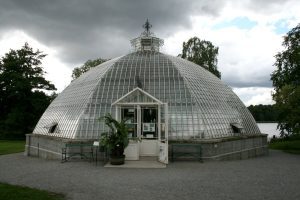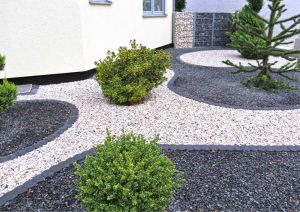The pandemic led countless people to reconsider how they cook, eat, and procure food. Many homeowners started gardens both to expand their supply and connect with their communities. Whatever the method, many began looking for ways to increase and enrich what they normally eat.
Google searches for the term “home farming” jumped 50 percent in March last year. Searches for “How to raise chickens” spiked 75 percent.
Of course, people also discovered that raising homegrown food has its vexations, too. Gardening means dealing with everything from pests, plant diseases, to seasonal shifts. That is, unless you grow plants hydroponically.
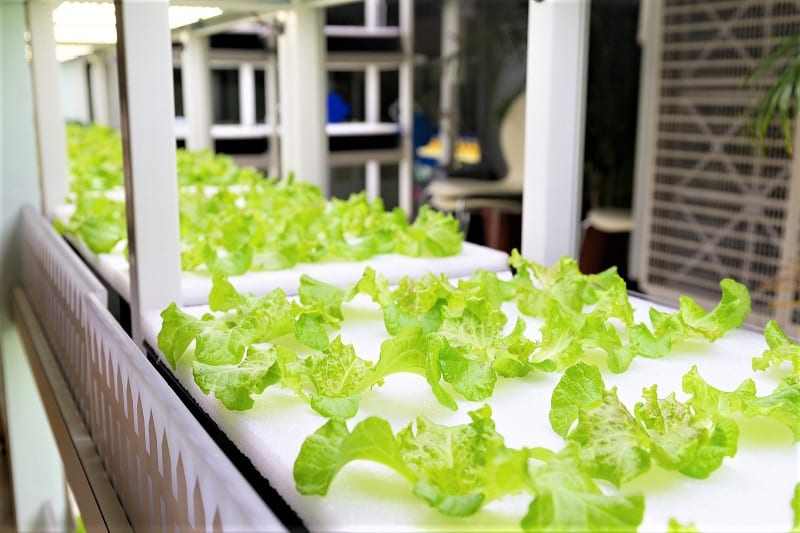
Growing Food Without Soil
Contents
To grow plants hydroponically is to grow them without soil. People have long associated the technology with growing cannabis. In fact, just saying the word hydroponics will induce smirks in a great many folks.
But in recent years, various companies have come along to give gardeners a high-tech way to raise homegrown vegetables.
Now, many hydroponic gardeners grow produce like bell peppers, lettuce, and tomatoes from the confines of their homes.
What’s striking about hydroponic systems is that they don’t require much at all. All you need are a bin filled with water, nutrients, and LED lights.
You don’t need to buy a whole system. But many of the systems on the market are aesthetically pleasing. Most are meant to be part of your home, not hidden away.
Most are horizontal. They have a planter bed that you drop seed pods into. A pump delivers water and nutrients to the seeds, and LED lights mimic the sun.
Some systems are vertical. Large systems typically start at around $400, but many small systems will cost round $100.
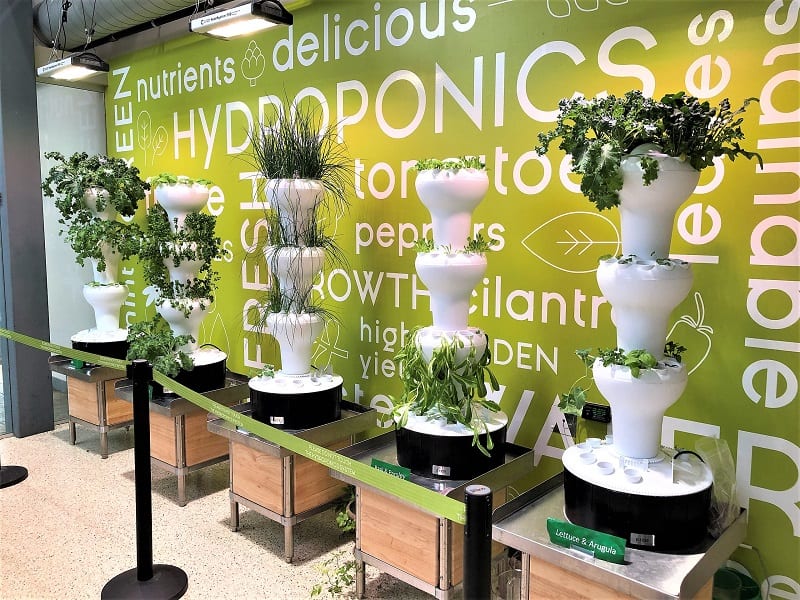
Fresh vegetables and herbs are just better.
Many gardeners use hydroponic systems to supplement their outdoor harvests. Hank Adams, founder and CEO of Rise Gardens, says food lovers appreciate the systems, too.
“Everybody knows that fresh ingredients are better,” Adams told Wired recently. “They taste better, and what may be less well known is just how much more nutrient-dense they are.”
The produce that growers ship to grocery stores travel hundreds – or even thousands- of miles, says Adams. Freshly plucked lettuce can be more nutritious. It tastes better when it’s been freshly snipped, as well.
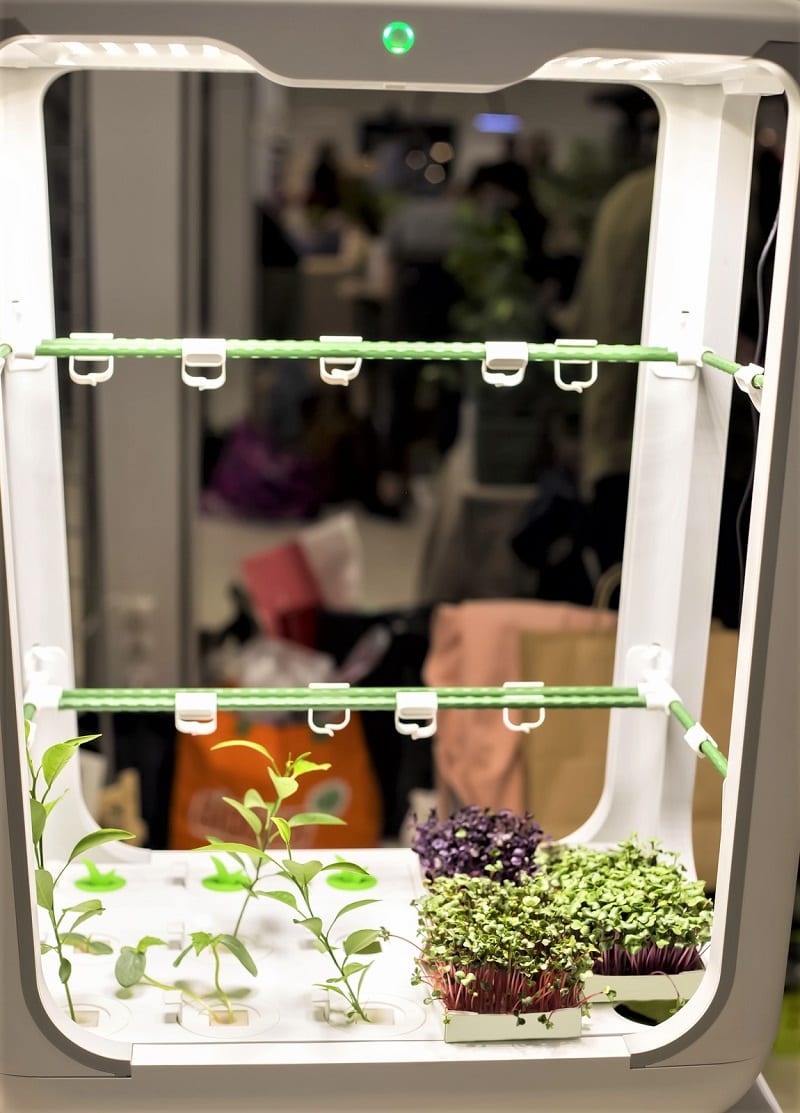
Teresa Edmisten, an architect from Atlanta, appreciates the aroma of fresh vegetables from her hydroponic system.
Hers is more utilitarian, she says, but it effectively grows basil. She and her husband frequently turn the basil into pesto.
“Depending on the varieties you do, those leaves are luscious,” she says. “And the smell is ridiculously beautiful.”
Gardening for Food and Aesthetics
Hydroponic systems are not what they used to be. They no longer have the look of a science experiment. Manufacturers design structures that you’d actually want decorating your home.
For Rise, Adams worked with industrial designers to create systems made of polished metal and real wood. They went through seven prototypes before settling on a model that can double as a piece of furniture.
Their systems are modular. They allow users to stack up to three tiers of gardens. The top tier has a hard surface that can serve as a table.
“It’s minimalist because we wanted plants to be the stars of the show,” says Adams. “But it’s still a physical structure that has some size to it.”

Hydroponics for Big and Small Spaces
You don’t need a suburban house with a lot of space in order to have a hydroponic gardening system.
Emily Marsh, a gardening enthusiast from of Sonoma County, California, always loved the feel of soil on her fingertips. But in 2019 she and her fiancé moved to a townhouse with a tiny concrete slab for a backyard.
As lockdowns in California extended into the month of May, Marsh read about the surge in gardens. Like many, she felt the urge to plant her own. But her only real option was a hydroponic system.
“I was completely against it at first,” she said, adding that it just didn’t seem like real gardening. Reluctantly, Marsh purchased a ready-made hydroponic kit online. “Now it’s just my favorite thing,” she tells the New York Times.
If space is just too tight, there are tabletop hydroponic kits, too. Rise has a personal garden system that grows 12 plants.
Others include Vivosun’s Indoor Smart Garden Plant Kit, which grows 12 plants, as well. There is also Aerogarden’s Black Harvest which grows 6 plants, excellent for kitchen herbs.
No, these smaller systems won’t replace the produce you buy at the grocery store. But they’re a good way to supplement the vegetables and herbs you purchase.
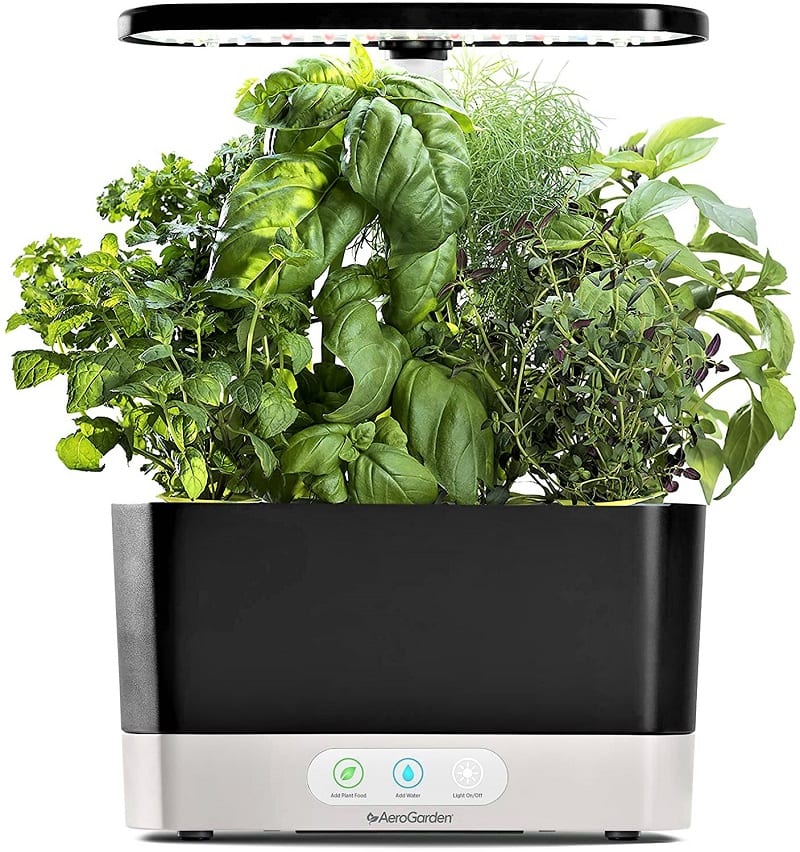
Plants are good for you in more ways than one.
Spending so much time at home has made people rethink indoor spaces. We’re surrounded by square shapes and hard lines. Whether we know it or not, this has our brains longing for something more natural.
This is why more people are turning to “biophilic” or “love of life” – design. This type of design concept focuses on incorporating nature into indoor spaces.
“There are certain patterns and forms and sights and sounds that we encounter in the natural world that give us a positive physiological response,” explains Jennifer Bissonnette, the interim director of RISD’s Nature Lab.
These include anything the smell of fresh herbs to the sound of a running brook. Biophilic design uses these elements in indoor settings.
Ultimately, they help reduce stress, lower blood pressure, and improve overall happiness, says Bissonnette.
There is no doubt that hydroponic plant owners are “plant parents,” too. They share the same profound natural connection with their wards.
Hydroponic systems don’t necessarily require the same amount of daily attention that a houseplant might. But engaging with plants nonetheless makes us feel connected to them.
“It’s wonderful to have it in your living environment, but there’s something about engaging with another living thing and understanding that you’re in a relationship with it,” says Bissonnette. “I think that’s a marvelous thing for us.”
Meanwhile, checking on her plants has become part of Edmisten’s daily routine. She says it makes her feel grounded.
“It’s just a focused escape,” she says. “The escape isn’t going somewhere else; it’s getting connected to where you are.”
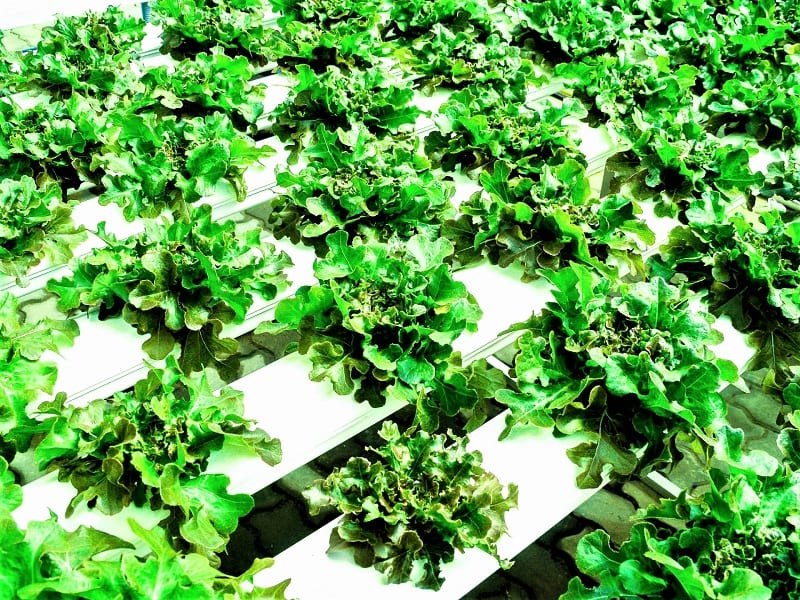
Faster Harvests with a Tech Twist
Do you want to grow food quickly? Many plants grow faster when raised hydroponically. These include turnips, spinach, and Swiss chard.
In fact, some are ready for harvest 30 to 50 percent faster than they would be if you grew them in soil.
Westen Johnson, a co-founder of the company, Soilless, says this is because hydroponics supply nutrients direct to the roots. “You can have a smaller garden and still produce a lot more food with it,” says Johnson.
Many of the systems even connect with apps that make it easier for you to grow healthy plants. Rise, for example, has users enter which plants they’re growing on an app. The app tracks the water levels, pH balance, and sets the lighting schedule.
“We tell you when to do it, how to do it, how much,” says Adams. :You really don’t need to be techie.”


